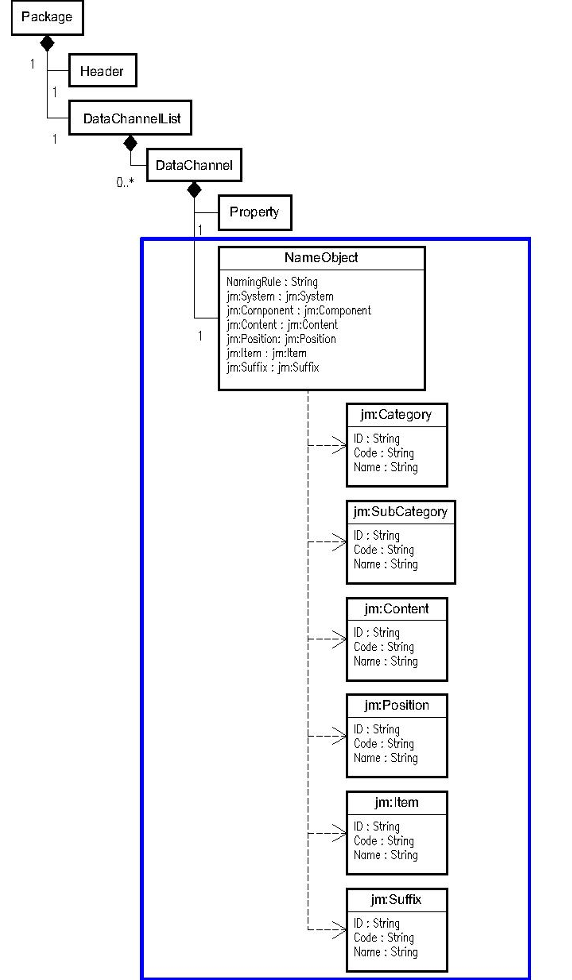Description of Local ID definitions
— jsmea-codebook
USECASE
The jsmea_codebook is one of the codebooks established by JSMEA – Japan Ship Machinery and Equipment Association. Local ID is constructed by combination of standardised terms listed in a dictionary called Codebook. The jsmea_codebook is composed of the seven kinds of codebook below;
- jsmea_mac: codebook for engine and machinery
- jsmea_nav: codebook for navigational equipment
- jsmea_oil: codebook for oil properties
- jsmea_mot: codebook for ship’s motion
- jsmea_voy: codebook for voyage report
- jsmea_wea: codebook for weather around the ship
- jsmea_com: codebook for terms commonly used for the above codebooks
Naming Rule
A Local ID shall be named in accordance with rules that are unified respectively in each Naming Rule. As an example of jsmea_mac Naming Rule, a method for naming a Local ID by dividing the term of a sensor name into five levels and combining these terms is introduced. These levels are common for each Codebook but the meaning of Category and SubCategory is different.
| Level | Description | Example |
|---|---|---|
| Category |
Rough category of target name. Typically used for describe discrete equipment, systems, phenomenon, and material those are measured. |
MainEngine DieselGeneratorSet CoolingSeaWaterSystem |
| SubCategory |
A part of the above category. Component, parts which composing above systems or measurement device/method for the above phenomenon, material. |
Cylinder TurboCharger FuelOilLine |
| Content |
Material or phenomenon in the above Category / SubCategory. e.g. oil or gas that flows through pipeline. |
HeavyFuelOil CoolingFreshWater ExhaustGas |
| Position | Relative positions of measurement device in the target equipment. |
Inlet Outlet Port |
| Item | Indicates temperatures, pressures and other measurement objects. |
Temperature Pressure Speed |
| Suffix (Option) |
Only if Data Channels cannot be specified with the Elements shown above (from “System” to
“Item”), suffix may be added after Local ID to identify the Data Channels. Suffix may consists of and DataChannelType as shown below. Suffix: ../<modifier>/<DataChannelType>
|
Modifier is typically used to describe correction parameter such as temperature for fuel oil viscosity, like "at15degC" . |
According to the categorising and naming rules defined by “jsmea_mac”, “Main Engine #3 Air Cooler Cooling Fresh Water Outlet Temperature” for the ship whose IMO number is “IMO1234567” is as follows.
| ShipID | Naming Rule | Local Data Name | ||||
|---|---|---|---|---|---|---|
| Category | SubCategory | Content | Position | Item | ||
| IMO1234567 | jsmea_mac | MainEngine | AirCooler3 | CoolingFreshWater | Outlet | Temperature |
In this case, the <Universal ID> and <Local ID> are as follows.
<Universal ID> = http://IMO1234567/jsmea_mac/MainEngine/AirCooler3/CoolingFreshWater/Outlet/ Temp//Inst
<Local ID> = /jsmea_mac/MainEngine/AirCooler3/CoolingFreshWater/Outlet/Temp//Inst
Name Object
When writing Local ID structure in Data Channel List, Name Object, projection of the levels
described in B.1.1., is added under Data Channel element.
This figure shows an example of adding Name Object in “jsmea_mac”. In this example, three attributes
—ID, Code and Name— are added under Name Object to describe details.

Structure of codebook
Codebook is a list of standard names that corresponds to Name Object, and created for each Name
Object.
In codebook: ID, which is part of Local ID; Code, machine-friendly name that corresponds to the ID;
Name, that is for human readability; and its description are described.
Simple example of codebook is as follows:
| ID | Code | Name | SubCategory |
|---|---|---|---|
| MainEngine | 1ME01 | No.1 Main Engine | No.1 Diesel engine for propulsion |
Download material
Codebook
Standard ID
Data Catalog
For all general enquiries, please contact:
Email : ssap@jsmea.or.jp
